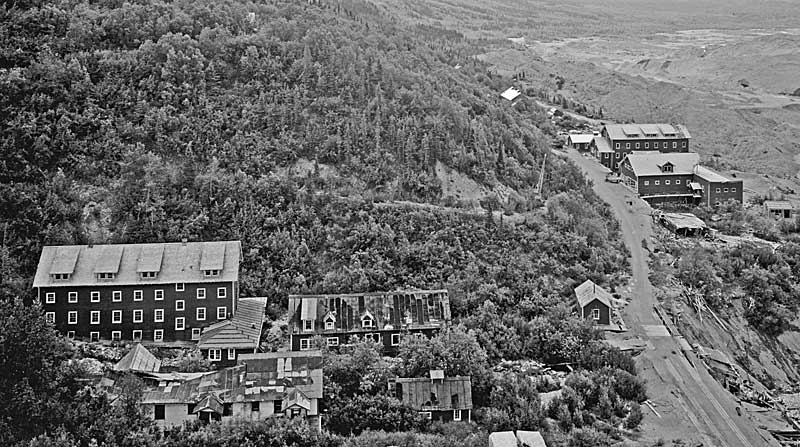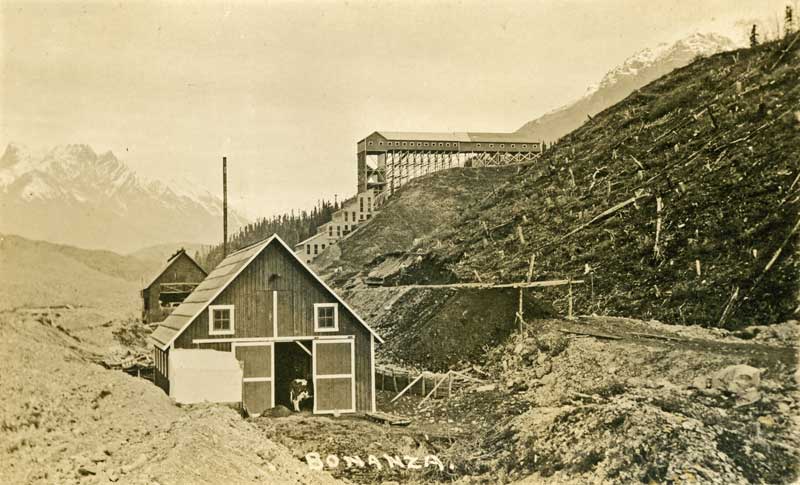John Bittner picked up the stack of telegrams from the railroad station office. One of them was addressed to Frank Buckner. “Thanks, John. I see the two Indian painters will be up on the train today. Set up the paperwork and give me their room assignment. I’ll let Chris know.” Frank brought the telegram down to the old carpenter shop, where master carpenter Chris Jensen was looking over the plans for the new hospital annex. “Yes, I remember those two well from the power plant job. Good. We can certainly use them for the repainting work on the mill. The paint for that work should already be here in one of the the boxcars that arrived a few days ago. It’s on the north siding. Good timing. Weather’s just right, too.” “I brought the room assignment with me. I’m leaving it to you to see they’re set up in camp, since you’re their foreman for this job.” “West barrack number 205, is it? That sounds familiar. Didn’t they have that one before?”
“I had to do some advance planning to see they had the same room. I want them to feel they’re on familiar ground.” “That’s awfully thoughtful of you, Frank.” “Those are special men. John lost his father here last year while we still had the two of them working up at Erie. The pair did good work for us on three different assignments. I want them treated right. It was their room before. I wanted to make sure it was still theirs.” “Yes, Emil was a good man, and his son and that other fellow did good work for us here at the shop and at the power plant. I’ll intercept them at the train station and see to everything. Haven’t had a paint foreman since Emil died. I might just give Johnny the job.” “Wouldn’t that be something? Think he’s up to it?” “I’m with you, Frank. I think those two earned their place here. It’s just a title anyway, but it’ll let them work out of Emil’s old shop. No one’s touched it since he died. Been no reason to go in there.” “There’s the whistle, Chris. I’m leaving it to you. I’ve got to get back.” Chris accompanied Frank out of the old shop. He took a good look at the top of the mill. It was badly faded. Parts of the building still had the original paint from 1911. The newest paint was on the highest section just above the conveyors and elevators. Those were levels thirteen and fourteen, which were rebuilt to accommodate the new Jumbo tram in 1915. The entire west face, which was the narrow end facing the glacier, had been blasted without mercy by the elements over the years. Chris had already decided that everything from the Hancock jig at level six, all the way to the top, which was level fourteen, would have to be repainted. The lower end had already been modified two years before. All of the lower levels had new paint. There are several men around here who could handle those heights, but they’re all miners and tram men. Only those two Indians and Henry have any painting experience, thanks to last year’s job. Henry’s tied up, so It’ll be good to have someone I can rely on to do the work. I hope I can rely on them. Chris felt the vibrations running through the tracks. It would not be long. He headed back into the carpenter shop, lifted up the hatch door and walked down the narrow stairwell into the paint room. No one had used the paint shop since Emil died. It seemed only fitting that he was about to give this area over to Emil’s very own son. Everything appeared to be in place. Emil had left the tools cleaned and neatly arranged for the next job.
Darn. I smell paint down here. Something’s broken open. Looks like those boys have some cleanup work for their first job. Smells strong. I’m out of this place. Chris headed back up the stairs, stopping to close the hatch to keep the spilled paint smell contained. He stepped out into the light and walked over to the small telegraph station. The train appeared just past the dairy tender first, then the engine. The engine and its tender had been faced the opposite direction at the Shushanna Junction turntable, then sent up the nearly five miles up the tracks in reverse pulling its long load of empty flat cars. Number 74 would leave Kennecott in a few hours facing south. The engines, for safety reasons, always had to face the proper direction going down the hill into the McCarthy area. There was no turn-around at Kennecott, so the engine and tender had to be reversed at Shushanna Junction. The loud screeching sounds of metal on metal as the brakes were applied served as the final notice that the engine was approaching its destination, passing the recreation hall, then the west barrack and company store before arriving at the station. The engine backed into place, facing the combine, several box cars, and the usual long line of steel flatcars with a caboose somewhere out on the very far end. Art Holt pulled the combine to a stop in front of the station. Chris moved forward to greet Johnny and Cap.
|
Chapters from the historic novel "Legacy of the Chief," by Ronald Simpson, and other items mostly related to the historic background of the Ahtnas in the context of Kennecott Copper & its Copper River & Northwestern Railway.
08 February 2011
Chapter 37: "Emil's Paint Shop," Pt 1
Subscribe to:
Post Comments (Atom)





No comments:
Post a Comment